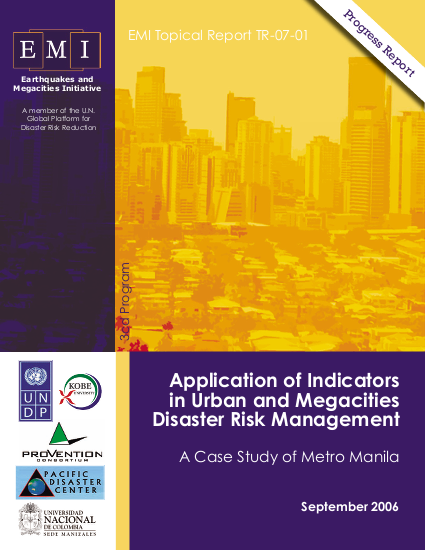
The main objective of EMI’s Cross-Cutting Capacity Development (3cd) Program is to empower local governments, local institutions and communities to incorporate risk reduction options in their daily activities.
Most often local governments and city stakeholders do not have a clear understanding of available risk reduction and risk management options or the process that will lead to a successful implementation of these options. The missing link between available knowledge and its application in real situations is the lack of appropriate mechanisms to communicate and transfer this knowledge between the scientific community and the end users or practitioners in the different sectors, for example government offi cials, the private sector and the community in general. In the context of the 3cd Program, EMI is devising several risk communication and risk reduction monitoring tools. One of the most promising is the use of a “Megacity Indicators System - MIS”. Together with its partners at the National University of Colombia, Manizales (NUCM), and the International Center of Numerical Methods in Engineering (CIMNE) of the Technical University of Catalonia, a pilot application to investigate, develop and test a MIS tool was initiated in Metro Manila on March 2006. The following provides some general background on this topic.
The Megacity Indicators System (MIS) is a tool to communicate risk and promote discussion around appropriate strategies and concrete actions that cities can devise for risk reduction and management. The MIS helps enhance ownership within city stakeholders and assists in policy development, decision-making, and monitoring effectiveness of specific options adopted.
Resource collections
- UN Habitat - Urban Response Collection
- Urban Response - Urban Crisis Preparedness and Risk Reduction
- Urban Response Collection - Community Engagement and Social Cohesion
- Urban Response Collection - Economic Recovery
- Urban Response Collection - Environment and Climate Change
- Urban Response Collection - Housing, Land and Property
- Urban Response Collection - Urban Crisis Response, Recovery and Reconstruction
- Urban Response Collection - Urban Resilience